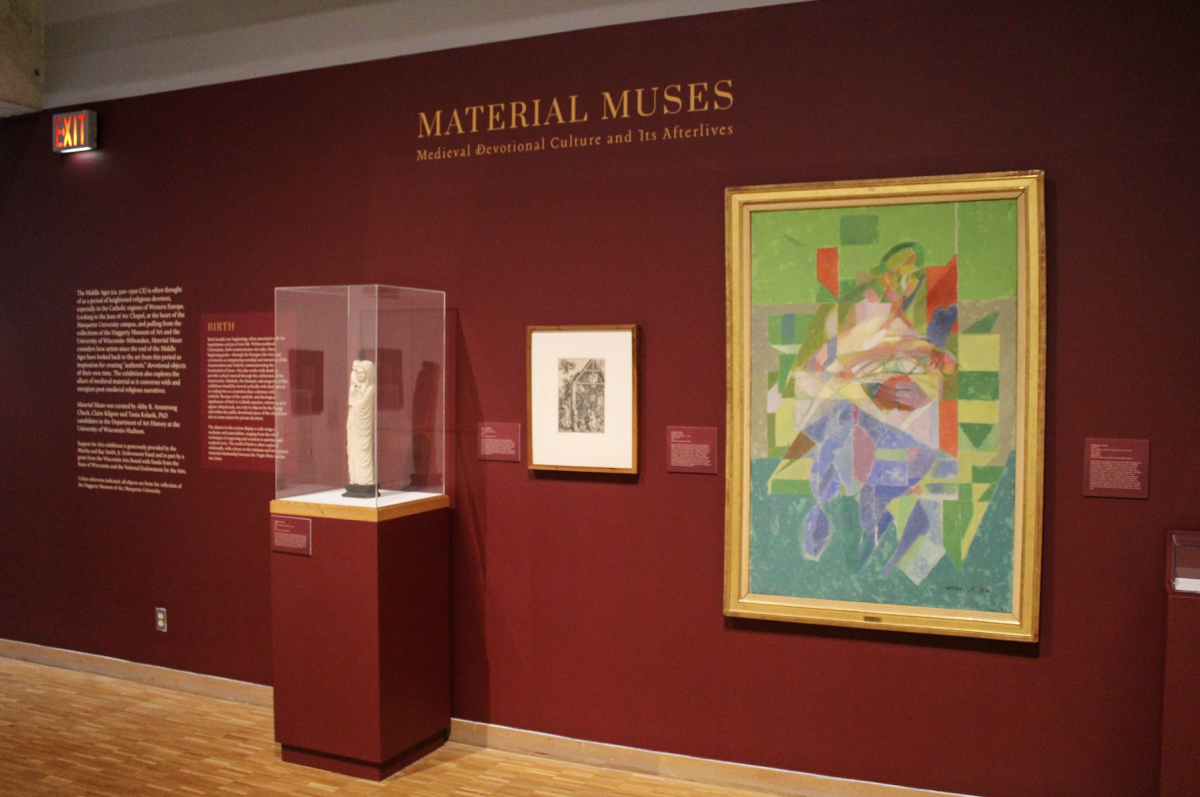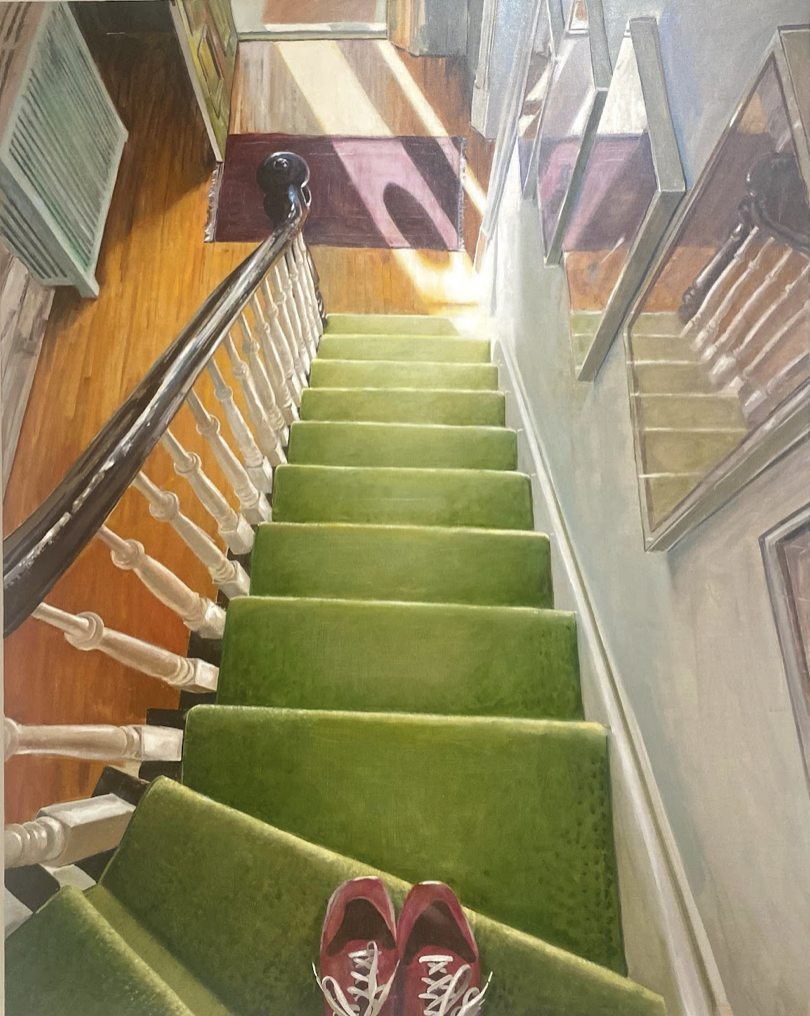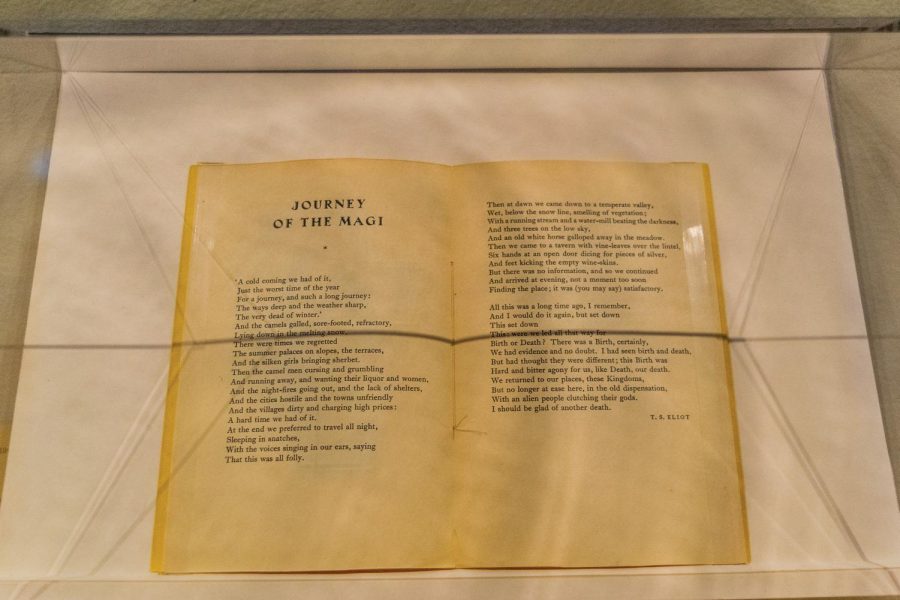“Dynamic Range: Photographs by Bill Tennessen” a photography exhibit at the Haggerty Museum of Art explores a range of themes in photography from sports, politics, Juneteenth and more. The exhibit is on display at the Haggerty Museum of Art from Jan. 19. until May 12. 2024.
This exhibit was curated by Lynne Shumow, Curator for Academic Engagement, in collaboration with Robert Smith, Professor of history and director of The Center for Urban Research Teaching and Outreach at Marquette and Milwaukee’s Black Holocaust Museum. This exhibition is a collection of photographs taken by Milwaukee photographer Bill Tennessen. Tennessen is a graduate of Marquette’s College of Business Administration class of 1956 and worked as a photographer for the Milwaukee Community Journal.
This exhibit can be found on the second floor of The Haggerty Museum of Art. The exhibit divides the photographs into five different sections. In the first room when walking in, viewers can see photographs separated into five categories: “Community,” “Juneteenth,” “Ernest Lacy,” “Storefronts and Churches” and “The Arts.” In the second room of the exhibit, viewers can see the sections: “Sports,” “Politics” and “Boys and Girls Clubs of Greater Milwaukee.”
The photographs are mostly from the 80s and 90s and display a range of political figures, famous athletes, Black youth at community events and the arts around the Milwaukee community. The exhibit especially highlights the tragic death of Ernest Lacy in 1981.
In the Ernest Lacy section of the exhibit there is a plaque explaining that 22-year-old Lacy, who was suspected of rape, was killed after an altercation with Milwaukee police officers. The plaque explains that after Lacy’s death he was ruled out as a suspect after identification from the victim.
“Hopefully some of the people that come in will see some familiar faces. You see a lot of joy in the black community. You see a lot of focus on family and community. There is one section that is very difficult about Ernest Lacey who was killed in police custody which is a very challenging aspect of the exhibition. It is very important though, and brings up ideas of history repeating itself,” Shumow said.
This section of the exhibit also contains photographs from the courtroom, photographs of marches that took place in Milwaukee on Wisconsin Avenue where Lacy was killed and a photo of Lacy’s parents at the day of his service.
Shumow explained that this exhibit took about a year and a half to complete. She said that each photograph in the exhibit has an accompanying plaque to give context for the picture and what year it was taken.
“There were a lot of photographs to look at, so I recruited my team to go with me to Mr. Tennesen’s house a few times. We brought hundreds and hundreds of photographs back here and we broke them down into categories. I had the ultimate discretion but it was a team effort to decide which photographs to include,” Shumow said.
Shumow also explained the unique process of how this exhibition came to fruition. Bill Tennessen’s son Charlie Tennessen came into The Haggerty Museum of Art and asked to speak to a curator. Shumow said that normally the staff at The Haggerty come up with their own ideas for exhibitions. However, Charlie Tennessen explained that his father was a graduate of Marquette and Shumow agreed to sit down with him and began to look through the photographs.
Shumow said that at first this exhibit was meant to be in companion with another exhibit the museum was already working on, which was a photography exhibit using photographs from an artist from the south.
“It was initially planned as a smaller exhibition in companion with the bigger photography exhibition. The exhibit would have a local and national component,” Shumow said.
Shumow and her team of staff and interns later decided to dedicate a whole exhibit to Tennessen’s photographs. Shumow explains that each photograph within the exhibit are all photographs Tennessen took and printed. Choosing which photographs to include was a hard process given that Tennessen has thousands of negatives and a large archive of photograph Shumow said.
Shumow also said that with Black History Month coming up in February, this exhibit was intentional and the curation team at the Haggerty Museum of Art wanted to do something for Black History Month by highlighting a photographer in the Milwaukee community.
Shumow said that she hopes that viewers of the exhibit will enjoy seeing pieces of Milwaukee history as well as joy in Milwaukee’s Black community.
This story was written by Avery Darrow. She can be reached at a[email protected].









